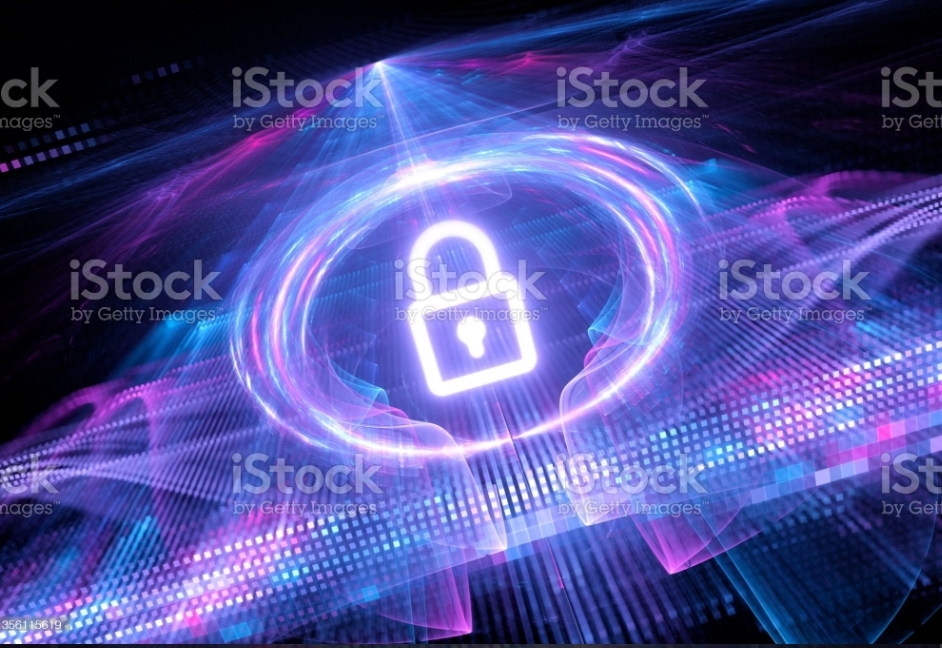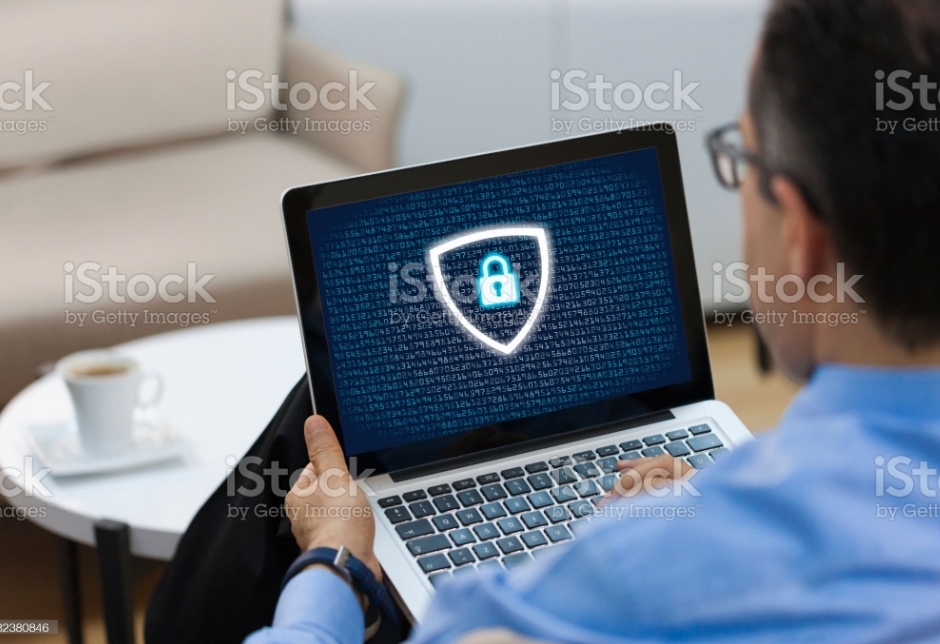What is Quantum Cryptography?
Quantum physics’ uncertainty principle provides the earliest foundations for quantum cryptography. Quantum cryptography becomes the projected solution as future quantum computers are expected to handle discrete logarithmic problems and the generally known cryptography methods such as AES, RSA, and DES are expected to fail. In practise, it’s used to create a shared, secret, and random sequence of bits that allows two systems, say Alice and Bob, to communicate. Quantum Key Distribution is the term for this.

Following the exchange of this key between Alice and Bob, extra information can be exchanged using well-known cryptographic procedures. Cryptography is the technique of encrypting data or scrambling plain text so that only those with the appropriate “key” can read it. By extension, quantum cryptography encrypts data and transmits it in an unhackable manner using quantum mechanics principles.
While the definition appears straightforward, the intricacy lies in the quantum mechanics principles that underpin quantum cryptography, such as:
- The particles that make up the universe are fundamentally unpredictable, and they can exist in multiple places or states of existence at the same time.
- In one of two quantum states, photons are generated at random.
- A quantum property cannot be measured without causing it to change or be disturbed.
- Some quantum attributes of a particle can be cloned, but not the entire particle.
Quantum cryptography is based on all of these ideas.
BB84 and variations based on Heisenberg’s Uncertainty Principle –
A polarizer is used to pass a single-photon pulse. Alice may polarise a single-photon pulse with a certain polarizer and encode binary value bits to the polarizer’s output (vertical, horizontal, circular, etc.). Bob can match the situations with Alice and ascertain the validity of his guesses by receiving the photon beam and guessing the polarizer.
If Eve had been attempting to decode, the polarisation by Eve’s polarizer would have generated inconsistencies in Bob and Alice’s match cases, alerting them to eavesdropping. In such a setup, if Eve tries to listen in on a conversation, Alice and Bob will be alerted.
Unlike the original BB84 protocol, which had four polarisation states, the B92 protocol only had two.
- SSP, a protocol similar to BB84, employs six states to encode the bits.
- SARG04 is another approach that employs attenuated lasers and outperforms BB84 in multiple photon systems.
E91 and Variants — Based on Quantum Entanglement
Each particle is received by Alice and Bob from a single source that emits a pair of entangled photons. For each photon sent, Alice and Bob would exchange encoded bits and match cases, similar to the BB84 technique. However, because of the Entanglement principle, the results of Alice and Bob’s match cases will be the polar opposite in this scenario.
Complement bits in bit strings will be interpreted by either of them. Then one of them can reverse bits to come up with a key. This test can demonstrate the lack of eavesdroppers because Bell’s Inequality should not hold for entangled particles. Because a third photon in entanglement with energy levels adequate for nondetect abilty is practically impossible, this system is completely secure.
Entangled particles theory can be applied to the SARG04 and SSP protocol models.
Quantum Cryptography Attacks That Could Happen:
Attack Using Photon Number Splitting (PNS) –
Because sending a single photon is impossible, a pulse is sent instead. Eve can collect some of the photons from a pulse, and after Alice and Bob have matched their bits, Eve can use the same polarizer as Bob to obtain the key without being discovered.
Attack by a Fake-State –
Eve makes a copy of Bob’s photon detector and therefore captures and passes the photons intended for Bob. Despite the fact that Eve is aware of the encoded bit, Bob believes he received it from Alice.
What is the distinction between quantum and post-quantum cryptography?
Cryptographic techniques (typically public-key algorithms) that are expected to be secure against a quantum computer assault are referred to as post-quantum cryptography. Traditional computers take months, if not years, to solve these complicated mathematical equations. Quantum computers executing Shor’s algorithm, on the other hand, will be able to break math-based systems in a matter of seconds.
Quantum cryptography, on the other hand, employs quantum mechanics to convey secure messages and is truly unhackable, unlike mathematical encryption.
What is Quantum Cryptography and How Does It Work?
Quantum cryptography, also known as quantum key distribution (QKD), is a method of transmitting data through a fibre optic cable using a succession of photons (light particles). The two endpoints can identify what the key is and whether it is safe to use by comparing measurements of the attributes of a fraction of these photons.
- It is easier to explain the procedure if it is broken down further.
- Photons are sent via a filter (or polarizer) that gives them one of four polarizations and bit designations: vertical (one bit), horizontal (zero bit), 45 degree right (one bit), or 45 degree left (one bit) (Zero bit).
- The photons are sent to a receiver, which “reads” the polarisation of each photon using two beam splitters (horizontal/vertical and diagonal). The receiver must estimate which beam splitter to utilise for each photon because it does not know which to use.
- After the stream of photons has been sent, the receiver informs the sender of which beam splitter was used for each photon in the sequence it was sent, and the sender matches this information to the polarizer sequence used to convey the key. The photons read with the incorrect beam splitter are eliminated, and the resulting bit sequence becomes the key.
- The state of the photon will change if it is read or copied in any way by an eavesdropper. The endpoints will be able to detect the change. To put it another way, you can’t read a photon and then forward it or replicate it without being discovered.
Here’s an example of quantum encryption in action:
1.50

- Assume you have two people, Alice and Bob, who want to send each other a secret message that no one else can read. Alice sends a series of polarised photons to Bob across a fibre optic connection using QKD. Because photons have a randomised quantum state, this wire does not need to be secured.
- If an eavesdropper named Eve tries to listen in on the conversation, she will have to read each photon in order to figure out what is being said. She must then pass that photon to Bob. Eve changes the quantum state of the photon by reading it, introducing faults into the quantum key. This informs Alice and Bob that someone is listening in on them and that the key has been compromised, so they throw it away. Bob will be able to read the secret if Alice sends him a new key that hasn’t been compromised.
Quantum cryptography’s advantages
The following are some of the advantages of quantum cryptography:
It allows for secure communication.
- Quantum cryptography, rather than using difficult-to-crack numbers, is based on physical rules, making it a more advanced and secure technique of encryption.
- Eavesdropping is detected.
- When a third party tries to read the encoded data, the quantum state shifts, changing the users’ intended outcome.
- Provides a variety of security options.
- Quantum cryptography protocols are utilised in a variety of ways. Some, like as QKD, can be used in conjunction with traditional encryption methods to improve security.
Quantum cryptography’s drawbacks
The following are some of the potential drawbacks and limits of quantum cryptography:
- Polarization shifts and mistake rates. In transit, photons may alter polarisation, potentially increasing error rates.
- Range. With the exception of Terra Quantum, the maximum range of quantum cryptography has traditionally been roughly 400 to 500 km.
- Expense. Quantum cryptography usually necessitates its own infrastructure, which often consists of fibre optic connections and repeaters.
- The number of possible destinations. In a quantum channel, keys cannot be sent to two or more sites.
Traditional cryptography vs. quantum cryptography: what’s the difference?
- The process of mathematically scrambling data such that only one person with the correct key can read it is known as cryptography.
There are two types of key distribution in traditional cryptography:
- symmetric key
- asymmetric key.
Asymmetric cryptography uses two keys:
- a public key to encrypt messages and a private key to decode them.
- Symmetric key algorithms use a single key to encrypt and decrypt information, whereas asymmetric cryptography uses two keys: a public key to encrypt messages and a private key to decrypt them. Traditional cryptography methods have been trusted because factoring the enormous numbers that make up public and private keys would take an impractical amount of time for classical computers.
- Quantum cryptography, unlike classical cryptography, is based on quantum physics laws rather than mathematics. Furthermore, whereas traditional cryptography relies on mathematical computation, quantum cryptography is far more difficult to decrypt because witnessing the involved photons alters the expected conclusion, alerting both the sender and recipient to the presence of an eavesdropper.
- Quantum cryptography is usually connected with a distance or range, as the method necessitates the use of fibre optic cables and spaced-out repeaters to enhance the signal.
Quantum cryptography implementation in the future
- Quantum computers are still in their infancy, and more research is required before a broad audience can benefit from quantum communications. Despite its limitations, such as the inability to communicate keys to two sites at the same time, quantum cryptography continues to advance.
- Improved range, for example, is one of the most recent advancements. Terra Quantum, a Swiss quantum technology company, has claimed a range breakthrough for quantum cryptography. Previously, quantum cryptography could only be used across a distance of 400 to 500 kilometres.
- Terra Quantum’s development allows quantum keys to be distributed inside regular optical fibre lines that are currently in use in telecom networks, rather than having to establish a new optical line with several repeaters.
In principle, quantum key distribution is unhackable.
- The laws of quantum physics may be able to help in this situation. Quantum key distribution (QKD) is a method of transmitting encryption keys that relies on some unusual subatomic particle characteristics and is, at least in theory, entirely unhackable. Photons are sent one at a time across a fiberoptic wire in the land-based form of QKD. If someone is listening in, the polarisation of the photons is changed, and the recipient may determine the message isn’t secure, according to quantum physics principles.
- China is the country with the most QKD infrastructure, with specialised pipelines connecting Beijing, Shanghai, and other major cities. In Europe, there are also networks. The first commercial QKD network launched in the United States this fall. The Quantum Xchange, which connects New York City’s financial firms with its data centres in New Jersey, rents space on existing fiberoptic networks and then sends secure messages on behalf of clients using its own QKD senders and receivers. Later in 2019, the company hopes to expand to Boston and Washington, D.C.
- However, the method is exceedingly sluggish, because sending and receiving individual photons requires expensive equipment. A consumer would need to purchase a transmitter and a receiver, each of which costs around $100,000, according to John Prisco, CEO and president of Quantum Xchange. He explains, “It’s not that dissimilar from other high-speed fibre optics communication technology.” “And as more companies offer the gear, the price will drop down.”
- According to Woodward, the key accomplishment last year was that QKD systems no longer require special pipes. “It appears like they will be able to use existing fibre networks rather than laying new fibre.”
The Now-Needed Solution for Tomorrow
The necessity for unbreakable encryption is right in front of our eyes. The integrity of encrypted data is now in jeopardy, with the development of quantum computers looming on the horizon. Fortunately, quantum cryptography, in the form of QKD, provides the solution we need to protect our data for the foreseeable future – all based on the difficult rules of quantum physics.
Conclusion
Quantum cryptography might theoretically be used to provide completely and provably secure communication, where the adversary cannot decode the communication regardless of their processing power or time. The technology, on the other hand, is still in the experimental stage and is continually evolving. Researchers are discovering errors in some of the earlier understandings and conclusions as they learn more about it and investigate it further. Given its limitations, it’s difficult to envisage this technology being used in a practical way today. However, future developments in quantum transmission, computing, and cryptography could present us with a fully secure communication system.





[…] method is quantum computing. (You can read more about it here.) However, quantum has a lot of difficult difficulties to […]